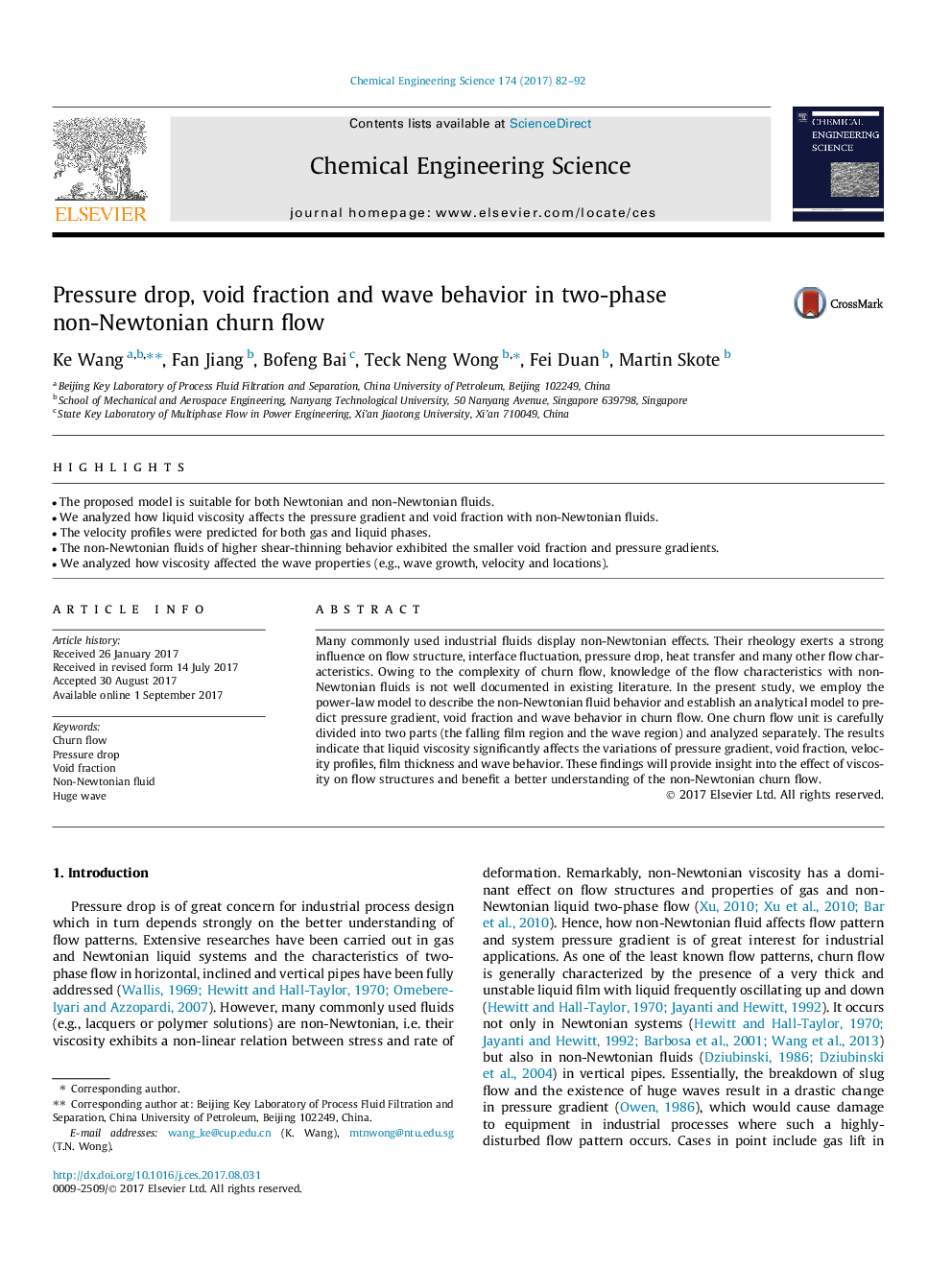| Article ID | Journal | Published Year | Pages | File Type |
|---|---|---|---|---|
| 6466892 | Chemical Engineering Science | 2017 | 11 Pages |
â¢The proposed model is suitable for both Newtonian and non-Newtonian fluids.â¢We analyzed how liquid viscosity affects the pressure gradient and void fraction with non-Newtonian fluids.â¢The velocity profiles were predicted for both gas and liquid phases.â¢The non-Newtonian fluids of higher shear-thinning behavior exhibited the smaller void fraction and pressure gradients.â¢We analyzed how viscosity affected the wave properties (e.g., wave growth, velocity and locations).
Many commonly used industrial fluids display non-Newtonian effects. Their rheology exerts a strong influence on flow structure, interface fluctuation, pressure drop, heat transfer and many other flow characteristics. Owing to the complexity of churn flow, knowledge of the flow characteristics with non-Newtonian fluids is not well documented in existing literature. In the present study, we employ the power-law model to describe the non-Newtonian fluid behavior and establish an analytical model to predict pressure gradient, void fraction and wave behavior in churn flow. One churn flow unit is carefully divided into two parts (the falling film region and the wave region) and analyzed separately. The results indicate that liquid viscosity significantly affects the variations of pressure gradient, void fraction, velocity profiles, film thickness and wave behavior. These findings will provide insight into the effect of viscosity on flow structures and benefit a better understanding of the non-Newtonian churn flow.
